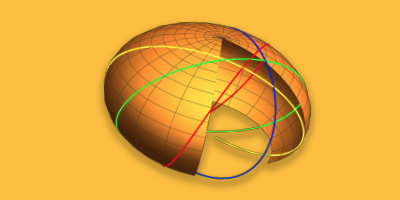Mathematica and The American Mathematical Monthly’s “Problems and Solutions” Section
The “Problems and Solutions” section of The American Mathematical Monthly journal has always been a source of interesting problems to keep me entertained. Their solutions often require ingenuity. The problems in the October issue were no exception.
I always analyze and explore these problems in Mathematica. Being a kernel developer, I see whether Mathematica can indeed find a solution. This last issue has challenging problems, and it was particularly gratifying to observe that Mathematica could solve them right out of the box. So here are my solutions to three of the paraphrased problems:
Problem 11457, by M. L. Glasser:
![]()
Solution in Mathematica: Relaxing assumptions on a and b to avoid degenerate cases:
![]()
![]()
Problem 11456, by R. Mortini:
![]()
Solution in Mathematica:
![]()
![]()
Problem 11449, by M. Bataille:

Solution in Mathematica: As the expression is left unchanged by the variable’s rescaling, and as c is positive, let us set c==1.

![]()
Hence the minimal value of 9/8 is attained for a==b==c.

![]()
Because the expression is left invariant by interchanging any of the variables, the maximum value of 2 is attained for a==b==c/2 or a==c==b/2 or b==c==a/2.
Mathematica can help solve practically any computation problem. Its thousands of functions are detailed in the online Documentation Center, with many tutorials and examples.



It’s doing pretty efficiently!
An e-friend of mine recently complained that in similar calculations, (-1)^(1/3) gives the complex root, rather than -1 as expected by schoolkids – and maybe even high school kids. He thinks that there should exist a high school mode.
By the way, how Nadiya is doing, O.P.?
This seems, to me, to take a lot of the fun out of solving challenging problems. Sometimes we get so excited about what new technology can do, we don’t bother to step back and think about what it might undo.
What might technology undo?
Do you send these solutions to the editors. Do they consider them solns? I too use Mathematica on such problems in many journals. I feel that in 10-20 years such problems — having solid algorithmic solutions — will be viewed as no more interesting than computing digits of Sqrt[2]. Yet journal editors and problemists seem not to care that their problems can be solved algorithmically. Re M Enlow comment: I think problemists need to be more imaginative — some journals publish very many constrained optimization problems, but they all have a sameness to them and many (low degree) can be solved algorithmically.
For problems like that, getting the answer is not good enough – the solution is required.
It would be nice if Mathematica could provide it, too, and not just the answer.
@Barrett: I will leave that as an exercise for the reader, though I will say that one of my favorite quotations is from Michael Murphy: “Behind every technological innovation lies a withered human faculty.”
@Stan: I maintain that there is value in the “journey” just as much as in the “destination”. I may be biased, as a math teacher, but I believe that to be singularly focused on The Answer is to miss so much that is beautiful about mathematics and the patterns contained therein.
Obviously if you are doing complex calculations as part of your job, then most likely you don’t have time to appreciate the journey, and that’s understandable. But I’m guessing the AMM publishes these problems not because they simply want The Answer, but because, as Mr. Pavlyk mentions, they provide challenges and entertainment for many people.
Also, I would have to respectfully disagree with your assertion that “in 10-20 years such problems… will be viewed as no more interesting than computing digits of Sqrt[2].” First of all, the latter is an infinite process, not a problem with a solution. And there is nothing to be gained along the way, as we know that the digits will never terminate or repeat. But there are still other questions to ask. Are there ANY patterns in the digits? Are the digits truly random? Can we notice anything if we look at the decimal expansion in other bases? What are some good rational approximations to Sqrt[2]? Are there patterns in those numbers?
The best questions leave many other questions in their wake on the way to their solutions. And the fact that others have most likely already investigated and answered these questions does not diminish the joy I derive from pondering them myself.
Is there a character limit for these comments? I’m surprised I haven’t exceeded it. Sorry, this is a hot-button issue for me.
thank you so much
how i can send my problem(integral)?
good
thank you very much
thank you very much
we don’t bother to step back and think about what it might undo.
thank you very much